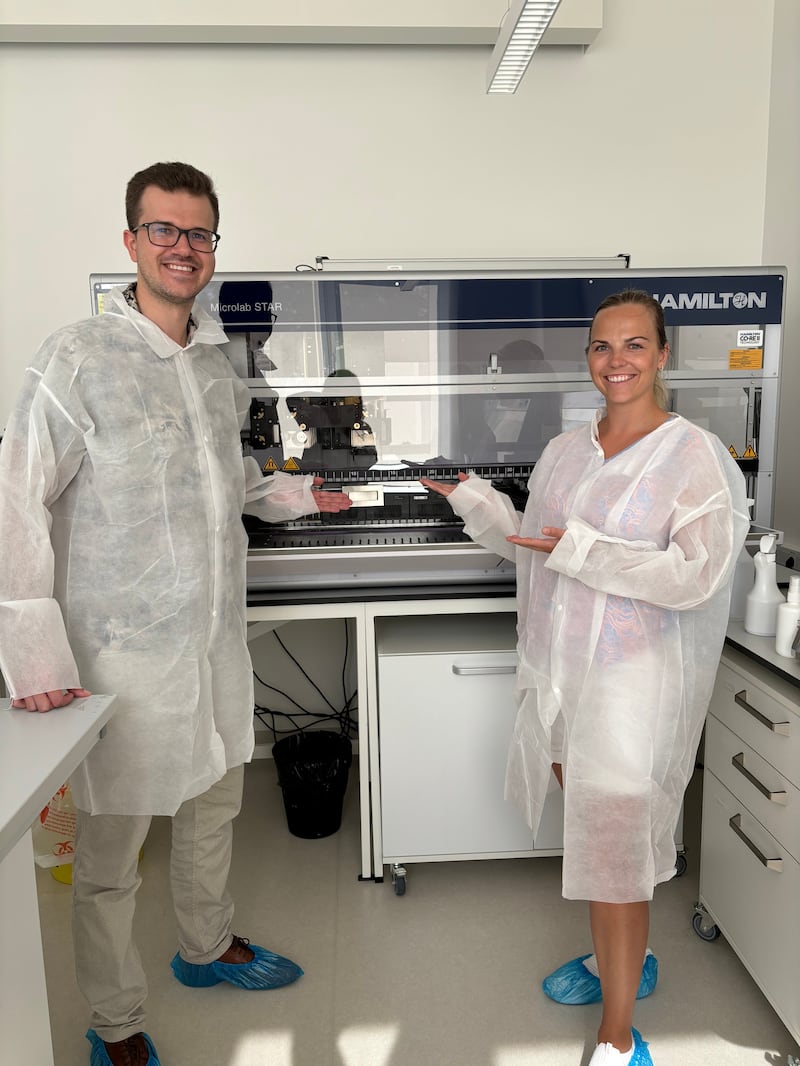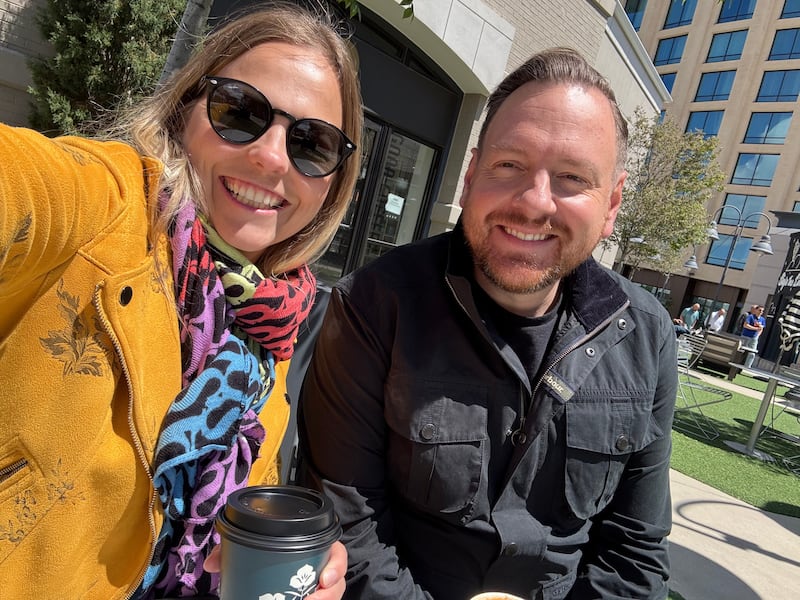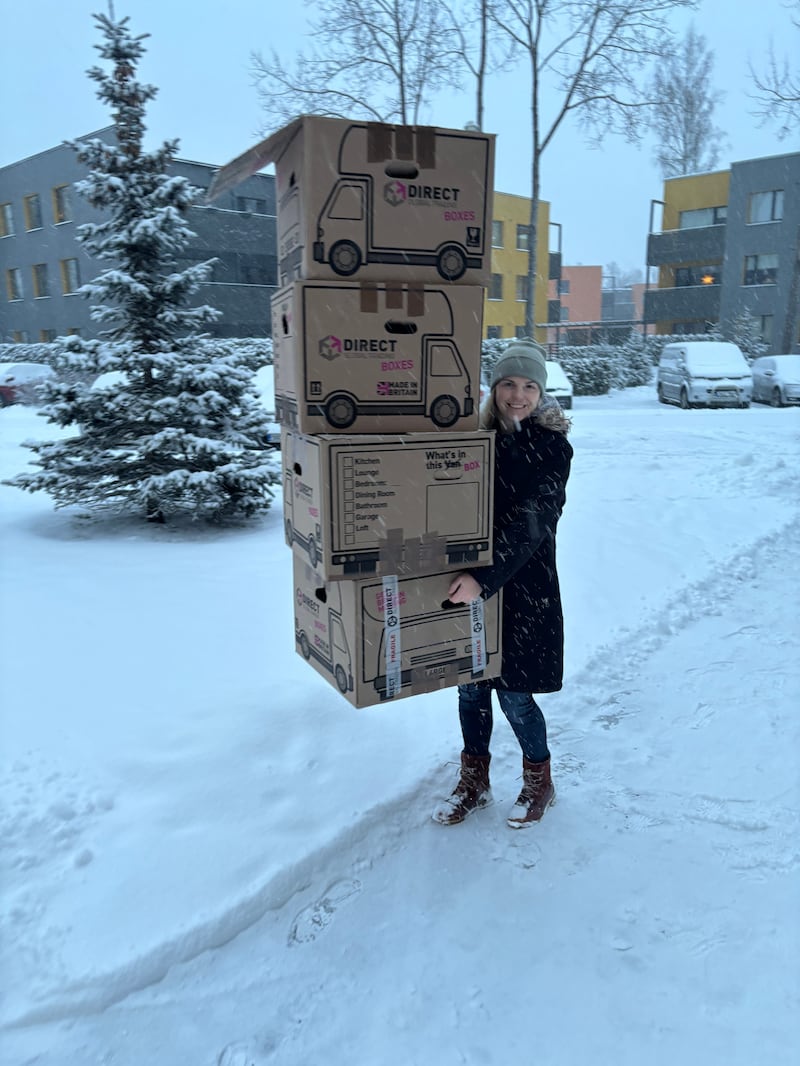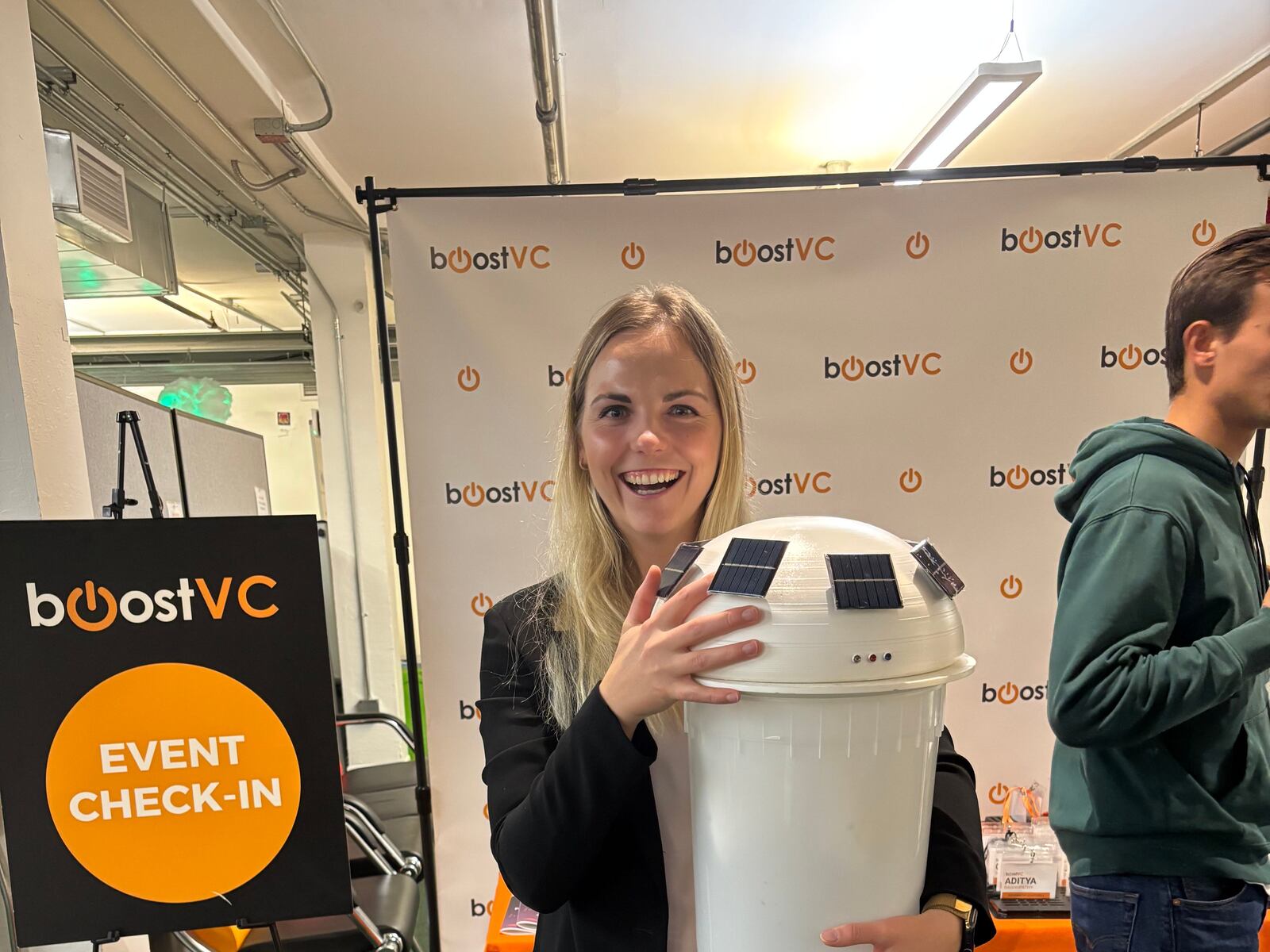A version of this article was originally published on Substack.
Three things you should know about me: I’m originally from Estonia. I’m a scientist. And in January, I moved from Estonia to Salt Lake City to build my startup, Elnora AI.
Many have asked me: Why the heck did you move to the United States? And the bigger question: How?
But first, some background on Elnora. My co-founder, Karl-Oskar Masing, and I officially started working together in January 2024. We did everything you’re supposed to do: registered the company, hired (and fired) our first team members, got into accelerator programs, grabbed all the free AI credits we could find, and talked to users and investors. But after speaking to 50+ investors in Europe, the pattern was super clear: They didn’t really get it. I realized we weren’t going to raise the money we needed in Europe. We needed to go to the U.S.
While earning my PhD, I spent two summers in the U.S., so I already had a taste of the “American dream.” I had felt the difference in attitude, the level of great talent and the willingness of others to dream along with you. Europeans are very practical; they believe what they see in front of them. But Americans are dreamers like me.
How I got my first U.S. VC money (from a cold email!)
One day, while I was still in Estonia and scrolling on LinkedIn, I saw someone mention Boost VC. Their profile and the people behind it indicated that they love being the first check-in, they believe in ideas and people, and they invest early.
At that point, Elnora was barely past the idea stage. We had made little real progress and have since pivoted about a hundred times. The idea I pitched to Boost is not what Elnora is today and definitely not what it’ll be in a few years. But that’s the nature of startups, especially at the beginning, and that’s something the European investors I spoke to just didn’t get. At pre-seed or even seed stage, what you’re building matters way less than why you’re building it.
I filled out the application on the Boost VC website. To my total surprise, I got a response the next day. They said they were interested in what we were building and would love to hear more. I booked a call with Gus Domel.

That first call was unlike anything I’d experienced with European investors. Gus got it; he got me. The questions he asked were completely different. In Europe, the first (and often only) question was, “What exactly is your product?” But with Gus, the conversation was, “What’s your vision? Why are you doing this? What motivates you? Tell me more about X, Y, Z.”
The next step was a call with a Boost VC associate. Just two hours after that second call, I got an email from the Boost team saying, “We believe in you. Here’s $100K to build your dream.”
For full transparency, here is the exact timeline: I submitted my application on June 17th, got Gus’s email the next day, had my first call with him on July 11th and the second call on July 12th. I got the offer the next day. I was in shock.
How I handled the legal stuff (without spending $10K+)
Gus recommended setting up a U.S. entity and channeling all future investment into that. This made total sense, as most of our clients are going to be U.S.-based, and I knew we’d be raising larger rounds from U.S. investors. This was to be the so-called “Delaware flip,” where you establish a U.S. company that becomes the parent, and the original company becomes the subsidiary.
Everyone told us it was a super complicated legal process that would cost at least $10K. But after talking to several lawyers (Always book free intro calls first, and if they charge for the first call, don’t use them!), my then-general counsel, Valentina De Giorgis, and I realized it actually sounded simple.
We had only raised some angel money and gotten a couple of grants. Our cap table was, and actually still is, fairly simple and straightforward. Karl-Oskar and I had (and still have) full control over the company, so it was just a matter of execution. Since we got a clear step-by-step plan from those free calls, we decided to handle it ourselves: Establish the U.S. company using Stripe Atlas, sell the Estonian company to the U.S. parent using local notary services, transfer existing contracts, and done. Voilà.
Just like that, we had two companies: Elnora AI registered in Estonia and Elnora AI, Inc. registered in the U.S. As soon as that was done, I gave Boost VC the green light to wire the money. And they did. Instantly.
How I found Salt Lake City to call home
Next, I needed a place to live, more money, and — oh yeah, a visa. Again, it was the magic of social media that helped me.
I’ve been a big fan of Recursion co-founder and CEO Chris Gibson for so long. I follow him on LinkedIn, listen to his podcasts, read his articles — all of it. But when I sent in an application to Altitude Lab, Recursion’s startup program, I didn’t actually know anyone on the inside.
Shortly after, I got an email: “Congratulations, your application has been progressed to the interview stage.” I was mindblown. What is this magical place called the U.S.? I scheduled the interview and met the team — Lauryn Narramore, Kapil Sharma and Chandana Haque. They were genuinely interested in me and my vision, and how Elnora could grow with their support.

A month later, I met Chris. My idol! A person I’ve looked up to since day one of my own journey! Just before the call, I thought I was going to throw up. But when I started the call, there he was: a friendly, regular, nice guy asking great questions. About 20 minutes into our call, he said, “Look, Carmen, I like it. Let’s do it. You’re in, and I will give you the fellowship.” I literally started jumping. I was beyond happy.
When I got off the call, my whole family was waiting behind the door. I looked at my husband and said, “We’re moving to Salt Lake City!” And he was like, “What?!”
He was surprised, but he wasn’t shocked. My husband is incredibly supportive. This wasn’t our first big move. I think that, deep down, he had hoped that one day we’d just live a normal life in Estonia — get stable 9-to-5 jobs, buy a house, get a dog. But I’m not ready for that, and he knows it. We’ve dreamed together so many times, and he supports me in all the wild and amazing things I want to do in life.
Many founders have asked me if I would have still moved to the U.S. if I didn’t get the fellowship. What would have happened if Chandana and Chris had said no? Most likely, I would not have physically moved. In order to move our whole family — including our 2-year-old son and 4-year-old daughter — I needed stability, and the team at Altitude Lab has provided that. Chandana told me how to get health insurance and which schools to check out for my kids. Other founders from Altitude told me where to buy a car from, and they even dropped off some toys and a bike for my kids and furniture for our empty apartment. These are “small things” that make a huge difference when you start from zero.
I have never heard such stories about people moving to Silicon Valley. Quite the opposite — they usually live in someone’s basement. This supportive community is, in my opinion, unique to Salt Lake City.
How I got my O-1 visa
The next step was figuring out how to get into the U.S. legally, so I reached out to my network and asked other founders about their visa journeys. That’s how I learned about the O-1 visa.
O-1 visas are for “aliens with extraordinary ability,” which, honestly, sounds like I need to be from another planet with superpowers. But it’s actually perfect for founders who can prove they’re doing something special in their field. The only downside is that it’s pricey — you’re looking at a $16K+ investment.

Since I already had experience extracting useful info from lawyers, I repeated my strategy. I booked free intro calls with different immigration lawyers and asked, “How does one get an O-1 visa?” After those calls, I realized this one was definitely not a DIY situation. I decided to go through the process with Plymouth Street.
They needed loads of documents, references, articles and press — because the O-1 is for people with “extraordinary ability,” I had to prove I was that person. But with a science background, a top university diploma, a hot Estonian startup, VC funding and a prestigious fellowship under my belt, it turned out to be enough. The process went smoothly, and it took just 8.5 weeks from me paying the bill to holding my passport and visa in my hands.
On January 12th, my family and I stepped onto a plane and flew to Salt Lake City. And that’s where the story of building Elnora really began.

